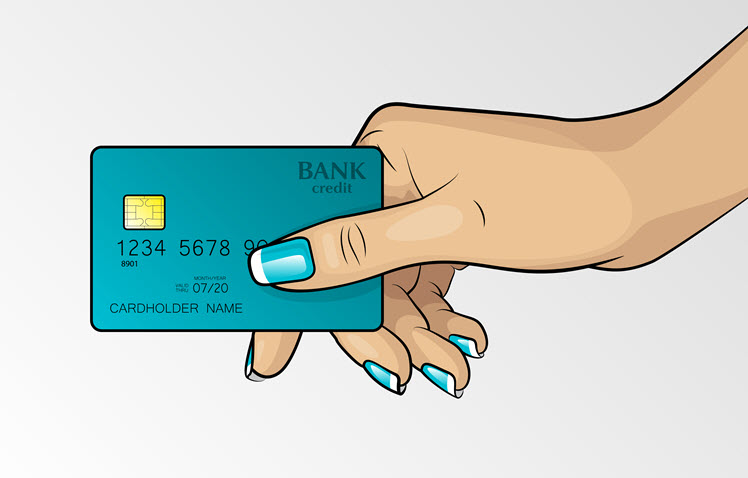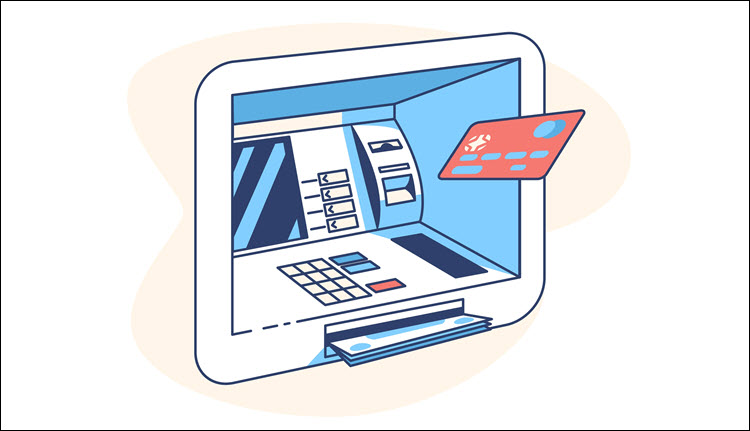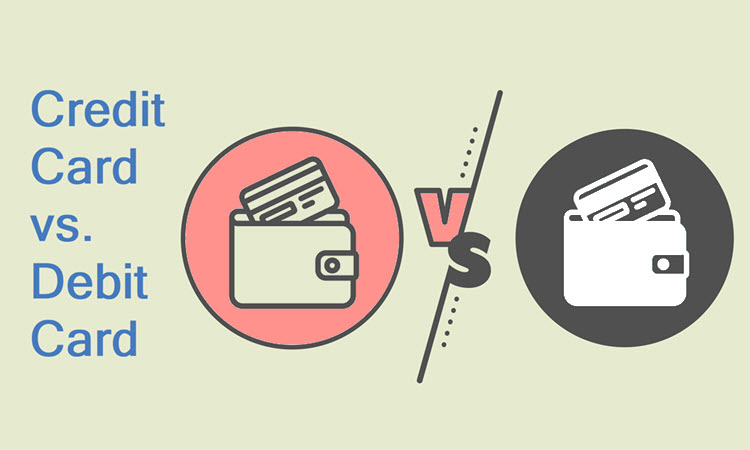Despite the popularity of alternative payment methods, like digital wallets and BNPL loans (Buy Now, Pay Later), credit and debit cards remain among the most widely used payment instruments.
Most people have several debit, credit, prepaid, and private label cards. All payment cards are plastic, thin, and rectangular, but although they appear similar, they work very differently.
Cardholders are often puzzled by the complex financial arrangements and fees associated with different payment card types.
Learn about the differences between credit and debit cards and use their features to your advantage.
What Is the Difference Between a Credit Card and a Debit Card?

A debit card is electronically linked to the cardholder’s current account. When the cardholder uses a debit card to pay in a store, buy something online, or withdraw cash from an ATM, the funds are deducted from the account’s balance.
A debit card owner needs to have enough money in their account or an active overdraft before initiating a payment.
A credit card allows users to access and spend funds from an approved line of credit. The credit card owner is, in effect, borrowing money from the card issuer (bank) every time they pay.
Before a credit card is issued, the cardholder signs a contract and accepts the card issuer’s terms regarding interest rates, due dates, repayment minimums, and late fees.
| Point of Comparison | Credit Card | Debit Card |
|---|---|---|
| Rates and Fees | - Annual Percentage Rate (APR). - Fixed annual fee. - Transaction fees. - Penalties for late payments. - Fixed administrative charges. |
- Card replacement fee (in case of lost or expired card). - Some banks charge fees for transactions in branches or ATMs operated by other banks. - Overdarft fees. |
| Credit Score Check | Obligatory credit score check. | No credit score check. |
| Purchasing Power | The approved credit limit depends on the cardholder’s credit score. | The customer can only spend the amount available in their account. |
| Fraud Protection | High level of protection and limited cardholder liability. | A cardholder might be asked to cover some or most of the costs if their card was used for fraudulent activities. |
| Rewards | - Cash Back rewards. - Travel privileges like air miles or hotel discounts. - Points with specific retailers. - Redeemable points. |
Most debit cards do not offer rewards. |
| Usage Limits | Most merchants accept credit cards. Card issuers may limit transactions for high-risk business models. | Banks impose limits on how much cash a cardholder may withdraw. Like with credit cards, transactions deemed to be high-risk may be restricted. . |
Rates and Fees
Credit Card
Credit cards work like revolving lines of credit. Cardholders must pay back at least part of the outstanding balance at the end of each billing cycle. The minimum amount is defined by the card issuer (bank).
Typically, cardholders need to pay interest on the borrowed amount if they carry a balance from the previous billing cycle.
Some credit card issuers do not charge interest but require users to pay fixed annual fees.
Funds that are paid back increase the available balance allowing cardholders to use the same line of credit.
Failing to meet payment deadlines results in penalties and can lead to an uptick in interest rates when renewing credit cards.
Debit Card
Clients get a debit card from their bank when they open a current account. Debit cardholders do not pay interest rates or fixed annual fees unless they spend funds from an account overdraft.
Most banks do not charge fees for issuing a debit card but require cardholders to pay for replacement cards if a debit card is lost or has expired.
Certain banks apply substantial fees to discourage debit cardholders from paying or withdrawing cash in other banks and third-party ATMs.
Using a debit card abroad can result in additional bank fees and unfavorable conversion rates compared to travel credit cards.
Credit Score Check
Credit Card
Clients undergo a credit check in which their payment history, credit history, and debt burden determine if a bank is going to issue a credit card and the size of the approved credit limit.
Clients with a low credit score may be offered a lower credit limit or even be required to deposit a certain amount of funds as collateral before a credit card is issued.
Debit Card
Banks may run credit checks on clients when opening a bank account, but clients do not undergo a credit check when a debit card is issued.
Some debit cards enable clients to draw funds from their account overdraft. In these instances, the client undergoes a credit check when applying for an overdraft on their current account.
Purchasing Power
Credit Card
Cardholders can have multiple credit cards with varied credit limits based on the credit score assessment. Once a cardholder reaches the limit (maxed-out credit card), new spending is not permitted until some of the funds are repaid.
Debit Card
The customer can spend the funds they have in their current account. Additional funds are available if the account owner applies for an overdraft or if the bank permits clients to draw money directly from a savings account.
Fraud Protection
Credit Card
Credit card spending results in increased customer debt, so card issuers are especially sensitive to payment disputes and fraud. Like debit card owners, holders of credit cards have the right to dispute payments and request refunds and chargebacks.
Credit card issuers typically accept liability while the suspected fraud or payment disputes are reviewed. They are motivated to protect their interests as much as the customer’s rights.
Debit Card
If a debit card owner is a victim of payment fraud, they can lose the money in their current account. However, fraudulent activity cannot lead to debt.
Cardholders may be liable if they do not report a missing card or potential fraud as soon as they notice suspicious activity. Banks do not intercede on the customer’s behalf as assiduously as with credit cards.
Rewards

Credit Card
Card issuers make their profits on credit card transaction fees and interest rates. They offer rewards, cash backs, travel incentives, and points that can be redeemed with specific retailers to encourage customers to spend more and make repeated purchases.
Debit Card
Debit cards offer fewer rewards as financial institutions rarely incentivize debit card purchases. It is often up to the merchant to motivate customers by developing engaging loyalty programs and loyalty discounts.
Usage Limits
Credit Card
Card issuers and brands impose certain limitations on credit and debit card usage. This includes purchases on websites from specific countries, adult content, gambling, lottery tickets, and other payments considered to be high-risk.
Many banks do not allow cardholders to use a credit card to repay mortgages, car loans, and other long-term loans. Repaying such loans with credit cards can lead to unsustainable cardholder debt due to higher interest rates.
Debit Card
Like with credit cards, banks use merchant category codes to restrict debit card payments for services and products considered high-risk or even illegal.
Typically, banks also limit how much cash a debit cardholder can withdraw at ATMs.
What Is a Credit Card?

A credit card is a loan. Cardholders use the credit card to spend funds from their approved credit line at the point of sale. The outstanding balance must be repaid on the due dates defined by the card issuer, either in installments or in full.
Types of Credit Cards
- Rewards credit cards. Every purchase results in a cash back, redeemable points, discounts, and other purchasing benefits.
- Low-interest credit cards. Banks charge interest on the debt carried over from the previous billing cycle. Low-interest cards are ideal for cardholders who cannot afford to repay their credit card bill in full and often carry debt over into the next billing period.
- Secured credit cards. Customers with a bad credit score can get a credit card by depositing a certain amount before a card is issued. The bank uses this deposit as collateral for the added risk.
- Travel credit cards. Travel credit cards are designed to help customers minimize payment fees while traveling and avoid unfavorable currency conversions. In addition, travel credit cards offer rewards that benefit frequent travelers, like redeemable air miles, hotel perks, and car rental discounts.
- Proprietary credit cards. Financial institutions and large retailers partner to create branded credit cards. Customers get benefits when using the card for transactions with the issuing company but often have to accept lower credit limits and higher interest rate
Advantages and Disadvantages of Credit Cards
Advantages
- Cardholders can buy items that would otherwise be out of reach.
- The borrowed amount does not have to be repaid in full and can be spread out into smaller portions.
- Good fraud protection.
- Most stores and merchants accept credit cards for in-person and online payments.
- Using credit cards responsibly improves the cardholder’s credit score.
Disadvantages
- Higher interest rates compared to specific purpose loans.
- People are encouraged to spend more than they can afford.
- It can be challenging to understand how fees and interest rates are calculated.
- Irresponsible use can lead a cardholder into a debt cycle or result in a bad credit score.
What Is a Debit Card?

A debit card is a payment instrument that enables users to access the funds in their current account. Debit cards are used for online and in-store purchases and are a practical substitute for cash, checks, and ATM cards.
Unlike credit cards, a debit card owner is not charged steep fees when withdrawing cash from the card issuer’s ATMs.
Types of Debit Cards
- Online debit cards. A standard debit card linked to the current account. Any changes to the account’s balance are registered immediately.
- Electronic purse card system. The value is stored in the card chip. POS terminals do not need a network connection to authorize payments. This payment system is primarily available in some European countries.
- Offline debit cards. The debit card is not electronically linked to the cardholder’s bank account. There is a 1 to 3 days delay before a charge is registered and debited from the account.
Advantages and Disadvantages of Debit Cards
Advantages
- A versatile card that is easy to use and understand.
- Cardholders cannot go into debt unless they apply for an overdraft.
- Limited damage in case of fraud. A potential fraudster can only spend the amount available on the account.
- No fees when withdrawing cash from an ATM or branch owned by the card issuer.
Disadvantages
- You can only spend as much as you have.
- Banks have strict stipulations for reimbursing clients in case of fraud.
- Responsible spending does not improve the cardholder’s credit score.
Credit Card vs. Debit Card: Which One Should You Choose?
Banks publish rate sheets that specify the rates and fees for debit and credit cards they issue. Customers should research rate sheets before deciding which card type is most useful in any given situation and best suited for their consumption habits.
Most people get a debit card by default when they open a bank account. They can be used for online payments and do not lag behind credit cards in terms of functionality.
Contactless payments allow customers who don’t have or use credit cards to complete their purchases more efficiently without resorting to cash or checks. It’s ease-of-use and the fact that it allows users to track their spending is a significant benefit.
Credit cards are an advanced financial product based on lines of credit and interest rates. A credit card gives users the freedom to buy a product immediately, even if they do not have enough money on hand.
Before using a credit card, cardholders need to understand how they work, the associated costs, and the potential pitfalls of using a card irresponsibly.
Conclusion
You now know that credit and debit cards are two very different products and understand how each payment instrument works.
The payments industry is undergoing a digital transformation at breakneck speed. Credit and debit cards may soon change their physical shape, but the services, functions, and features they provide are here to stay.
